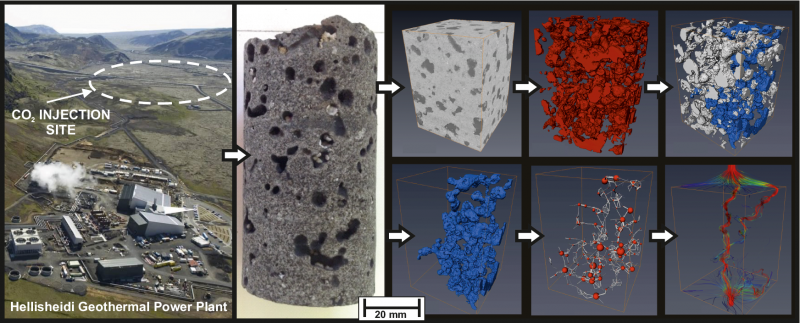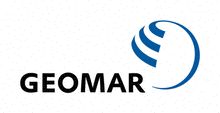Latest publication from STEMM-CCS: Assessing the CO2 storage potential of basalt using X-Ray micro-CT imaging
Ben Callow, a postgraduate researcher working on the STEMM-CCS project at the University of Southampton has published a paper which assesses the potential of basalt rock for CO2 storage via the formation of carbonate minerals. The work was carried out in conjunction with the CarbFix project, which conducted pilot injections of CO2 into basaltic rock in Iceland at the Hellisheidi geothermal power plant, to demonstrate the feasibility of the method.
Ben and his co-authors used X-ray micro-CT image analysis and mechanical tests to study core samples taken from the CarbFix test site, in order to assess the potential capacity of basalts to store CO2. Basalt is a volcanic rock formed from the rapid cooling of lava – it is very reactive. When CO2 is dissolved in water, it forms an acidic solution – this solution can react with basalt to form carbonate minerals, providing a permanent storage solution for CO2.
The results of the work conducted in the study show that basalts in the active rift zone in Iceland have the potential capacity to lock away 1000s of Gigatonnes (Gt) of CO2 - compare this to the ~35 Gt that humans currently emit into the atmosphere each year.
Following on from the CarbFix project, CarbFix2* will move this proven technology from the demonstration phase to a general and economically viable complete CCS chain that can be used throughout Europe and the rest of the world.
Ben is now using the X-ray micro-CT image analysis techniques to continue his work in the STEMM-CCS project investigating onshore analogues of geological chimney structures. The technique enables him to determine their permeability and assess whether they could act as potential pathways for CO2 to escape from beneath the seafloor surface.

A sample taken from the injection site and the resulting X-ray micro-CT images which are used to assess the pore network properties of the sample (image courtesy Ben Callow)
*CarbFix2 Project is funded by the European Union through H2020 (Grant Agreement No. 764760).




